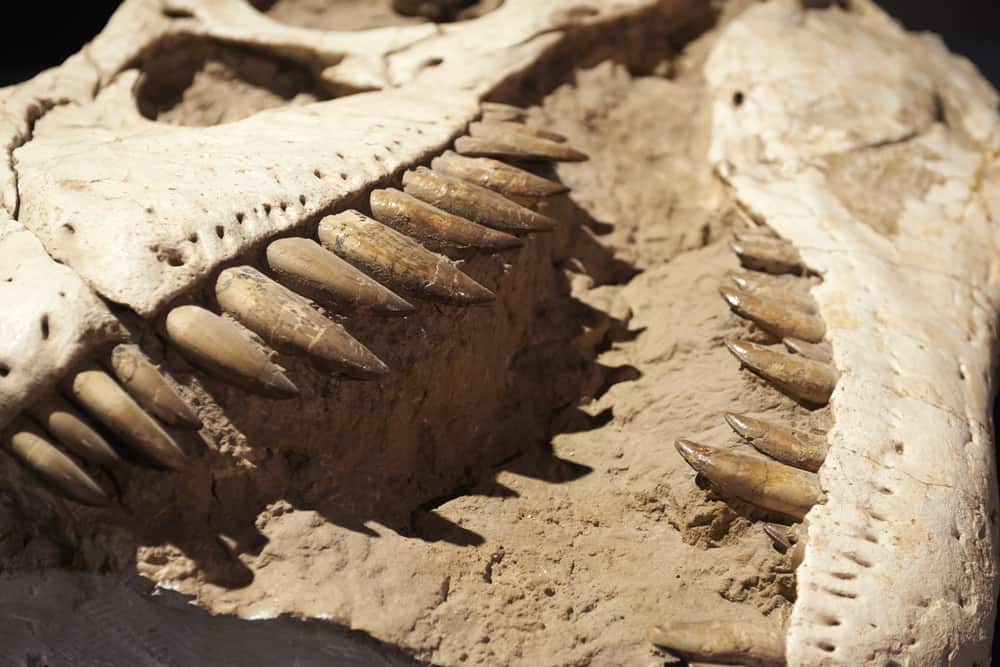Could you name some basic facts about dinosaurs? You could probably think of at least three or four, even off the top of your head. We would even name a few, but we might be wrong! Why? Well, because science is always evolving thanks to ongoing research. Years and years of discovery have changed the way we look at dinosaurs. Paleontologists, scientists, and researchers work diligently daily to help us better understand these prehistoric creatures and the way they lived millions of years ago. Although teachers explained to us the life and death of a dinosaur in school, scientists have made discoveries over the years to help gain a better understanding of these creatures. Pair that with incredible technology and we have new answers about these amazing animals.
Whether you have an interest in the Triassic, Cretaceous, or Jurassic period dinosaurs, we all loved dinosaurs as children and played with toys that resembled our favorites. However, what if your favorite dinosaur looked completely different than you thought? It would be a shock, right? Well, that may be the case with some dinosaurs. There has been so much new information available since we were in school. So, we thought… why not create a list of some of the best advancements made in the field of paleontology to help you learn new information about your favorite dinosaurs? So sit back, relax, and check out this article about dinosaur facts paleontologists discovered since you graduated. As far as you know, your facts about dinosaurs are just mere opinions now that have been debunked by recent research. Do you think the T. Rex is the largest dinosaur that ever roamed the earth? You would be wrong! Keep reading for more updated facts about dinosaurs your kids will learn about in their textbooks.
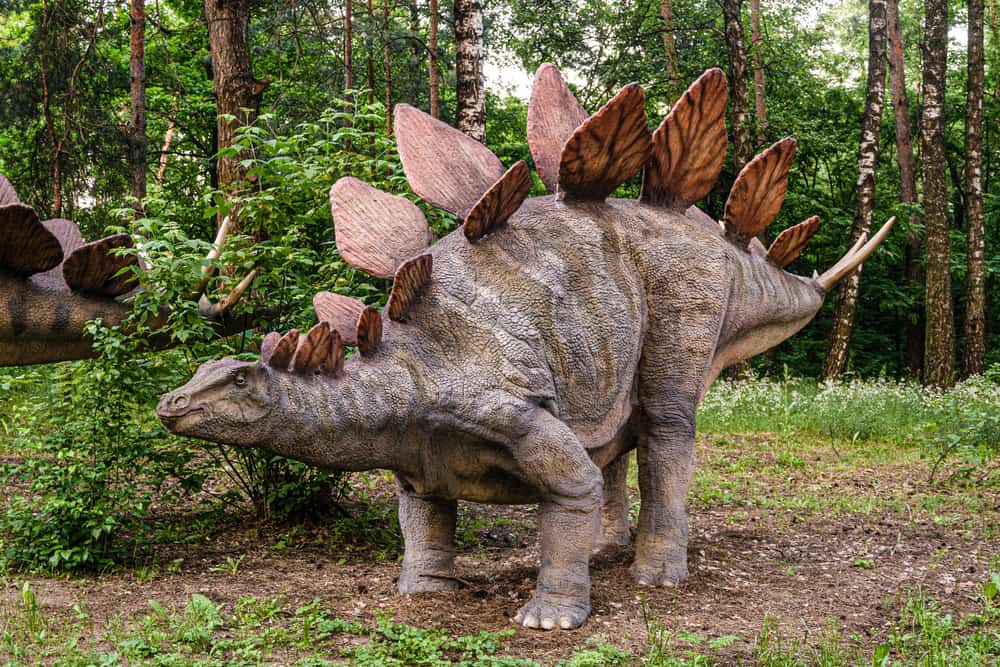
22. Did The Stegosaurus Really Have Two Brains?
It was a long-held belief that the stegosaurus actually had two brains – one in its pelvis and one in its head. However, scientists now believe this creature only had one brain. It was a simple theory that many scientists believed. That is, until they discovered new information, disproving the second brain idea. The Stegosaurus is an interesting dinosaur that lived during the Late Jurassic Period – between 155 and 145 million years ago. It was an herbivore, meaning it ate plant material such as leafy greens, stems, and flowers. Scientists considered the stegosaurus to be an armored dinosaur due to the spikes on its back.
This interesting dinosaur was a slow-moving one that lived peacefully among other dinosaurs of its kind. The spikes on its back were embedded into its skin and not a part of its spine. Scientists and paleontologists are unsure what the dinos used their tips for. However, it is only a matter of time before they figure it out and give us more information on this majestic creature. They found an almost complete skeleton and put it on display in The Natural History Museum’s Earth Hall in Washington D.C. Scientists only found one set of fossils for the stegosaurus fossils. Furthermore, they discovered them in the United States, leading scientists to believe that’s the only place this type of dinosaur lived.
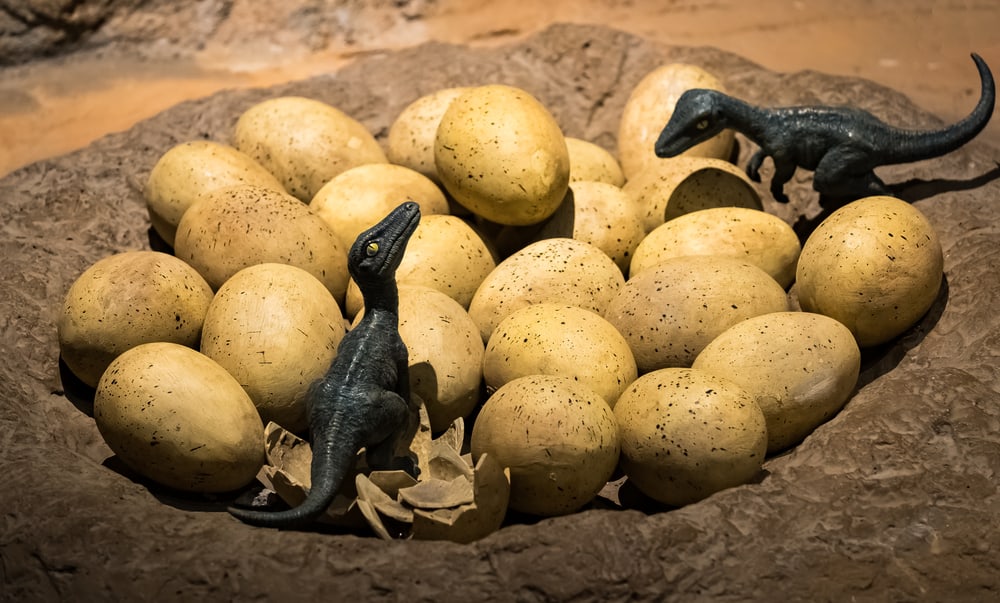
21. Were Dinosaurs Good Parents?
When you think about dinosaurs, especially Velociraptors and Tyrannosaurus Rexes, you may not think of them as the greatest parents. You may be surprised to learn these creatures actually cared for their young and did a great job doing it. It’s not something you would expect! In fact, it is difficult for paleontologists to understand dinosaur behaviors. However, there are ways to learn more about rearing baby dinosaurs. Scientists thought dinosaurs raised their young similar to lizards due to their similarities. However, some schools think something completely different about how dinosaurs raised their young.
Some scientists believe dinosaurs actually watched over their eggs and raised their young without abandoning them. It’s an interesting thought considering that’s how it should be with all animals, but there are animals out in the world that do abandon their young, and they thrive on their own. There are one species of dinosaur that paleontologists researched extensively in this aspect. The Troodon lived in North America and protected their eggs and babies by any means possible. It’s incredible to think of the similarities between these creatures and ourselves with our need to protect our children. Keep reading to learn more about dinosaur facts discovered since you were in school.
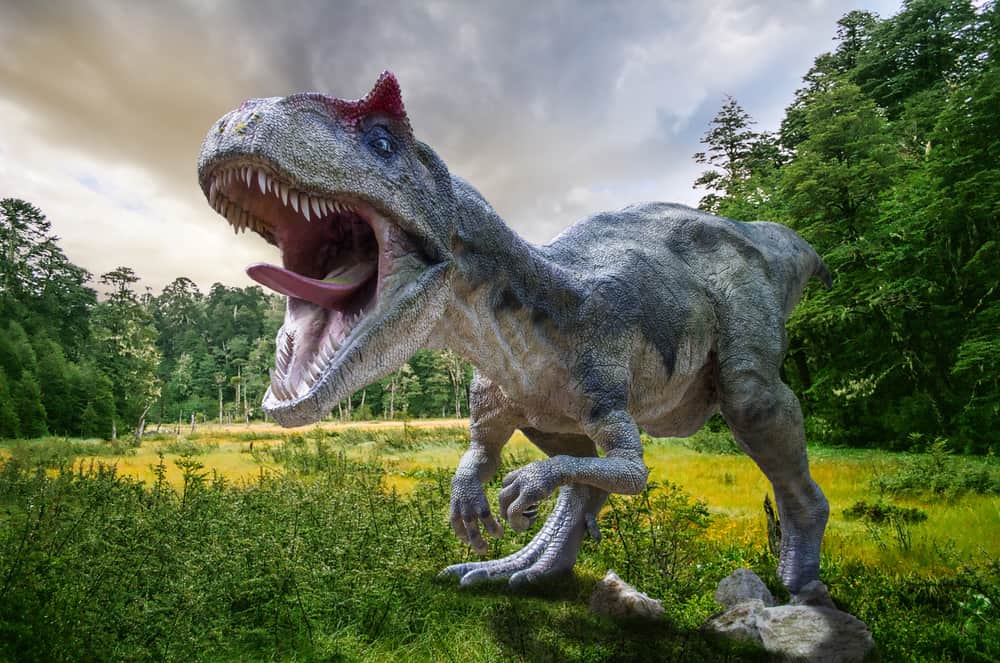
20. Dinosaurs Didn’t Roar
Can you imagine the type of sounds a dinosaur would make? Scientists believe, rather than roaring, dinosaurs made honking sounds like ducks or geese. Like the ones portrayed in moves like Jurassic Park, a typical scene shows dinosaurs like the Tyrannosaurus Rex bellowing out a roar, so what would make scientists believe they made honking noises? It all comes down to a small part of their bodies that produces sounds. Scientists have reason to believe dinosaurs made honking, hissing, and clicking noises due to them not having a larynx like most mammals. So, what we see in the movies is likely wrong.
Can you believe it? We were always taught in school that dinosaurs made roaring sounds. Scientists have discovered that instead of a larynx, dinosaurs had something called a syrinx. Primarily found in birds, the syrinx is the vocal cords that produce melodic sounds and chirping. A preserved syrinx from an animal similar to a duck was studied in 2016, and the results show dinosaurs couldn’t have possibly made roaring sounds. The syrinx only allows for quieter sounds like those that a duck or goose would produce. It’s so interesting that this new information changes the way we perceive these prehistoric animals! At least world doesn’t seem as chaotic with bursting volcanoes and roaring dinosaurs. Instead, they were merely singing or chirping when the asteroid hit!
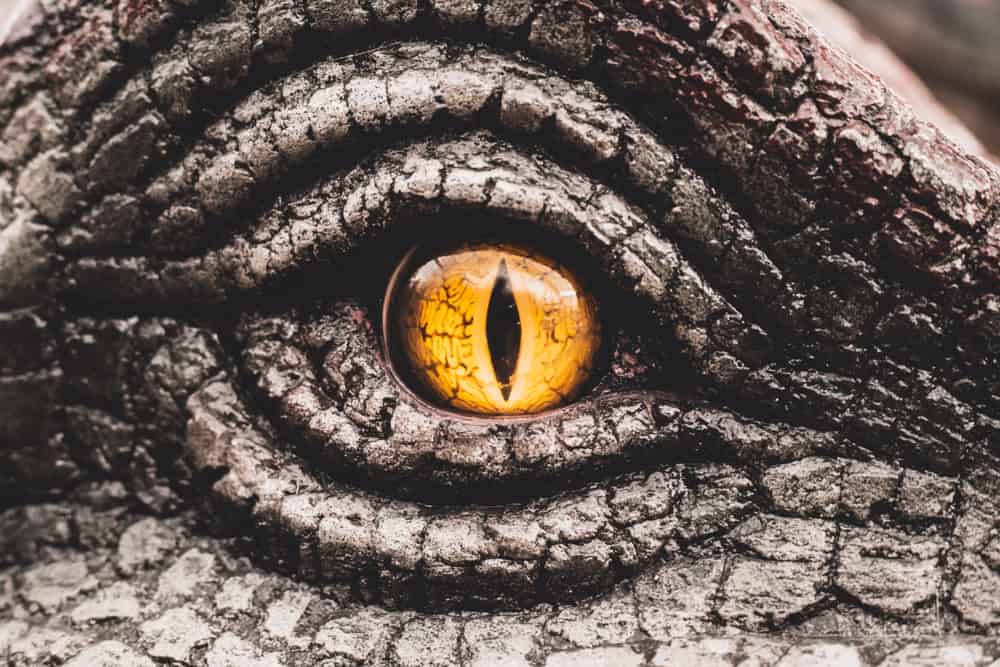
19. Your Favorite Dinosaur May Look Different Than You Think
You know how the history books portray the dinosaurs. Tyrannosaurus Rexes are the largest with sharp claws and teeth but could you imagine them looking differently? It’s possible that all dinosaurs actually look different than portrayed in the history books. The only thing paleontologists know for sure is what these sometimes deadly creatures’ skeletal structures look like. For all we know, dinosaurs seemed completely different than they are portrayed in the media. It’s crazy to think a dinosaur-like the stegosaurus – could have looked different than what we know. Could you imagine a Stegosaurus without the spikes on its back?
In fact, two paleontologists wrote a book on the subject. The book is titled ‘All Yesterdays‘ and discusses the alternatives to what we know and see from the media and history books. Authors of the book, C.M. Kosemen and John Conway, believe our perceptions may be skewed regarding what dinosaurs really looked like. To ensure their book made traction in the field, they presented pictures of present-day mammals with skewed imagery to show how future generations may see our current animals on Earth. The book was a hit in the paleontology field and raised questions about our current perceptions of prehistoric animals.
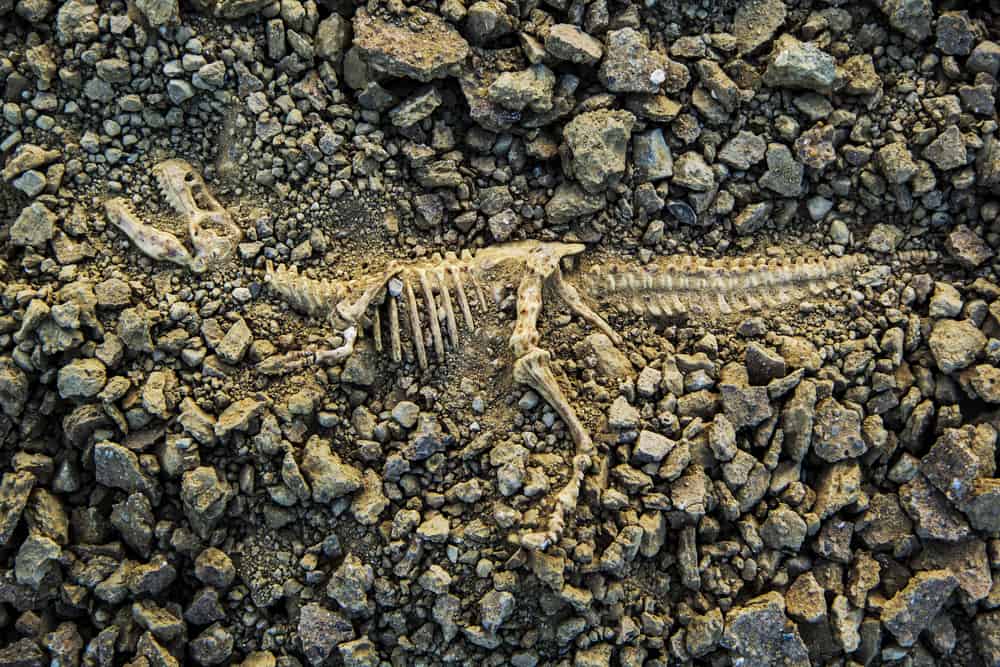
18. Scientists Found Something Large
Have you ever wondered if scientists discovered new species of dinosaurs since being in school? We can tell you it’s true. Scientists discover something new every year that leads us closer to understanding prehistoric creatures. Whether it’s a new reptile, mammal, or bird, scientists are working diligently all year round to give us the latest information on prehistoric animals. In fact, in 2013, they made one of the most significant discoveries to date. The Patagonian is the biggest dinosaur ever found. Named for the discovery region, the Patagonian weighed in at a whopping 76 tons and was 121 feet in length.
The Patagonian is a type of titanosaur discovered in the Chubut region of Argentina. Scientists believe the Patagonian was alive during the Late Cretaceous period, ranging from 95 to 102 million years ago. They found the first part of the dinosaur in 2008 by a farmhand named Aurelio Hernandez. He found a part of a lower thigh bone. After the discovery, a full excavation took place under the watchful eyes of paleontologists Diego Pol and Jose Carballido. Pol and Carballido found more than 200 fossils, making the Patagonian one of the most complete dinosaurs ever discovered.
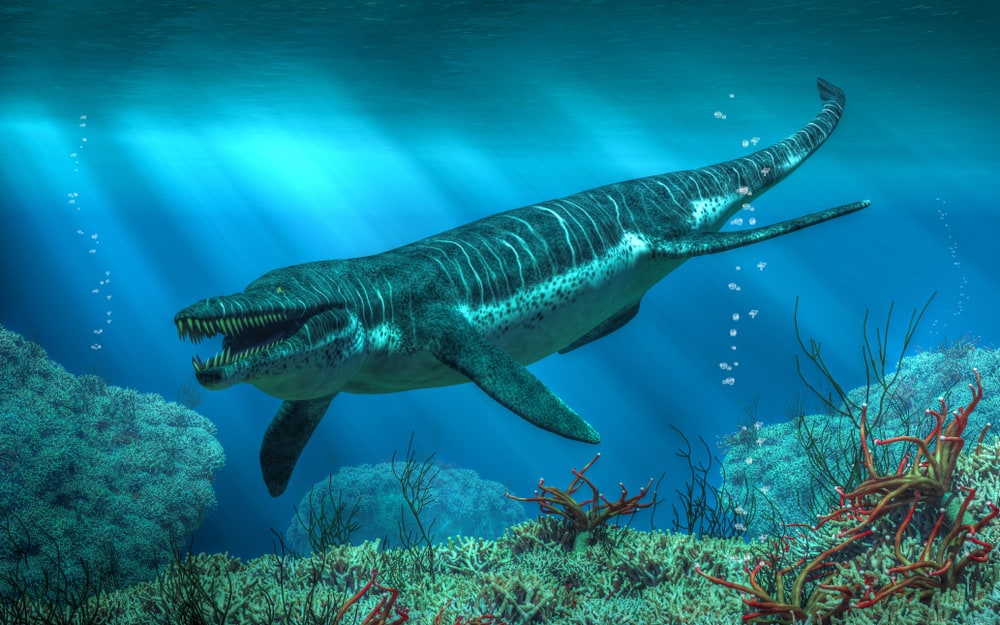
17. This Dinosaur Had A Role In Jurassic Park III
We’re sure you’ve all seen the movie. There’s a particular scene where a Tyrannosaurus Rex fights another dinosaur. That dinosaur is the topic of our subsequent discussion. The Spinosaurus boasts an enormous size and long claws that make it instantly recognizable. Despite what the movie shows us, this creature was actually an aquatic animal that didn’t go on land like the scene in the film. A 2014 discovery by paleontologists explains this occurrence. At a Northern Africa dig site, paleontologists discovered that changes the way we think about these dinosaurs. Keep reading for more fun and exciting facts about the Spinosaurus.
This aquatic dinosaur had a long snout and bone structure that made it a perfect hunting machine in the water. The Spinosaurus also had a paddle-like tail, which was discovered at the same dig site. The discovery helped paleontologists figure out that this dinosaur spent all of its time in the water rather than on land. Scientists describe the Spinosaurus as being similar to a crocodile with larger claws. This dinosaur would have hunted fish and other aquatic animals to survive rather than eating land-based dinosaurs. Keep reading for more interesting dinosaur facts! You won’t believe what’s coming up next!
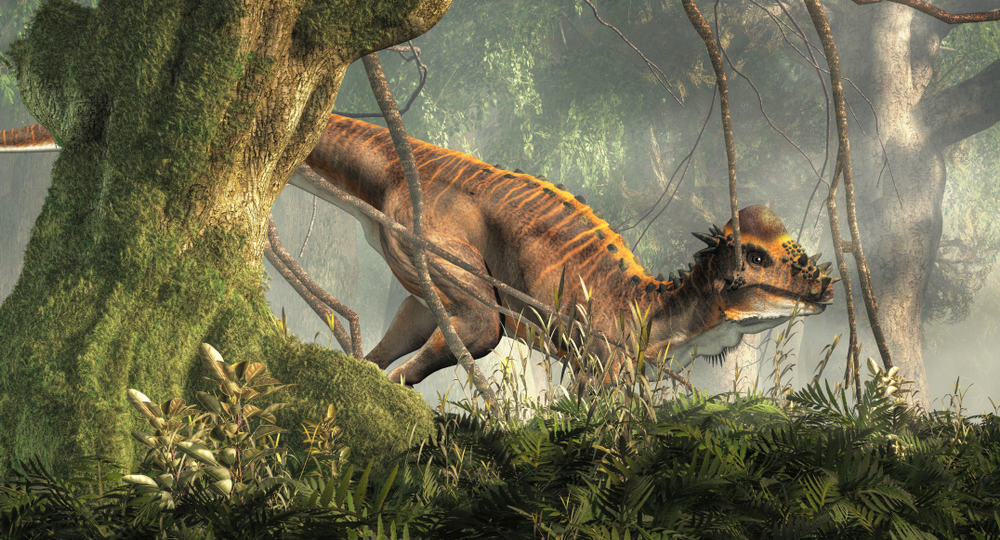
16. Scientists Discovered This Dinosaur Used Its Distinctive Head For Something Else Entirely
This dinosaur isn’t a well-known type, but we’re sure most of you will recognize it. The Pachycephalosaurus is known for its dome-shaped head, often thought to be used to fight other dinosaurs. Recent discoveries by paleontologists suggest they didn’t use it for fighting at all due to the size of the skull. Scientists believe just one impact with another dinosaur would have cracked the crown of the Pachycephalosaurus, causing irreparable damage. The Pachycephalosaurus head was likely used as a showpiece to scare off other dinosaurs. Scientists believe they didn’t use the dome shape of their heads for much of anything. That is, upon studying the skulls of these creatures right down to individual cells.
The Pachycephalosaurus thrived during the Late Cretaceous period. It roamed alongside other dinosaurs like the stegosaurus and tyrannosaurus rex. This dinosaur grew to be around 16 feet long and walked on two feet. Its’ back legs were strong enough to hold its weight and run, while its front legs were shorter and primarily used for eating. The scientists discovered Pachycephalosaurus mainly in North America in states such as Montana and North Dakota. Researchers have also discovered fossils in places such as Mongolia so that this dinosaur could have lived worldwide! The only difference found in these Pachcephalosaurus’ were the shapes of their heads.

15. Panic Ensued When This Dinosaur Went On The Chopping Block
The Triceratops is a well-known type of dinosaur. People make all kinds of merchandise in the likeness of these creatures – from children’s toys to t-shirts and even bedding. So what led to the panic? Well, in 2010, researchers announced the triceratops technically didn’t exist. They believed it was actually a younger dinosaur of the torasaurus species. The name triceratops was coined at a later date than Torasaurus. Thus, the name of torasaurus took the place of the triceratops. An interesting dinosaur, the torasaurus boasts three large horns over its face. Believed to be an herbivore, the torasaurus would have eaten leafy greens, vegetables, and fruit.
So, whether you prefer the name triceratops or torasaurus, it is the same type of dinosaur. Scientists just go with the name that was created first. The Torosaurus used its three large horns to fend off more enormous carnivorous dinosaurs like the tyrannosaurus rex. In fact, a specimen was discovered in North America in 1997 that had bite marks through a horn that matched the teeth of a tyrannosaurus rex. The horn actually healed from the bite, meaning the torasaurus survived the attack. Amazingly, these creatures could survive an attack from one of the largest and most deadly dinosaurs alive at that time!
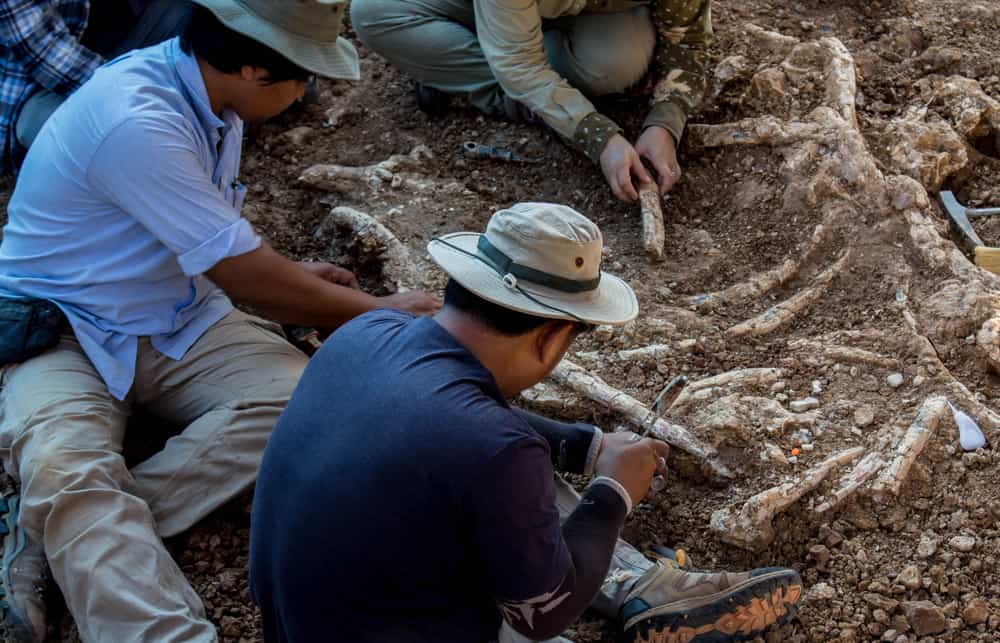
14. Well, That’s Something You Wouldn’t Expect To Find On All Dinosaurs!
It’s difficult to imagine dinosaurs looking differently than depicted in the history books, so what would you think if we told you most dinosaurs actually had feathers? Paleontologists have found extensive resemblances to dinosaurs and birds from the same periods through years of scientific study. It’s difficult to imagine, but most paleontologists take the same stance – most dinosaurs had some type of feathers. Could you imagine a tyrannosaurus rex walking around with a body full of feathers? It’s almost funny to think about – considering their size and the amount of terror they caused while they were alive. You learn something new every day!
Paleontologists made this discovery in stages throughout the years. It’s challenging to find a well-preserved specimen with the feathers intact, so researchers, scientists, and paleontologists took their time to ensure the discovery was accurate. In fact, they thought that only carnivorous dinosaurs had feathers during the discovery process. Of course, they changed that thought when they found a herbivore specimen with some feathers still intact. This discovery was made in 2014, and paleontologists are still working diligently to find the validity in their statements. Keep reading for more findings! We’re sure that eventually, all will be known about these elusive and exciting creatures.
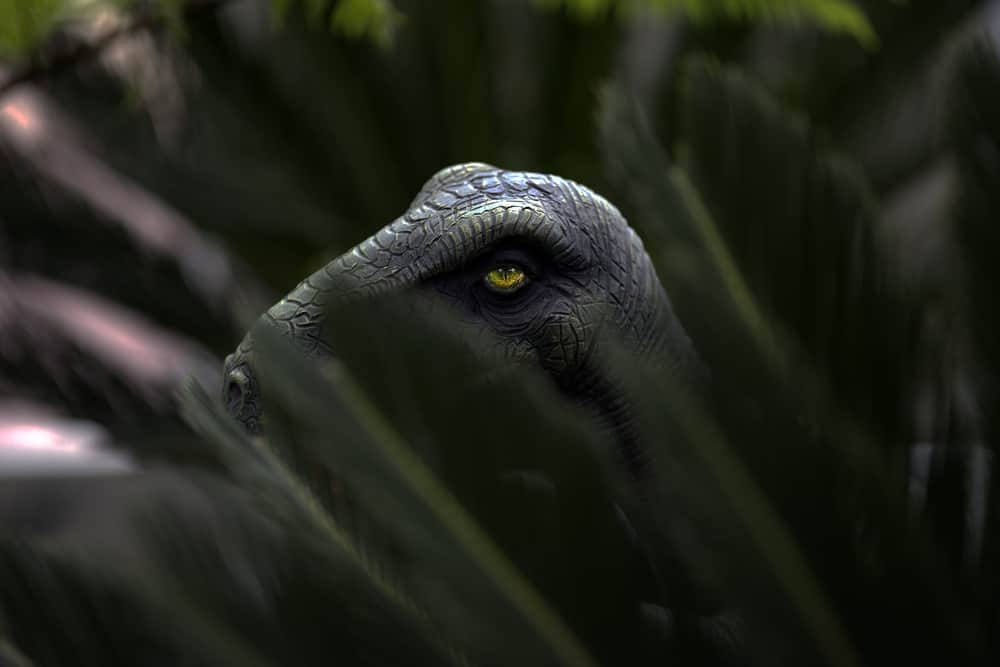
13. What Do You Know About The Largest Dinosaur Ever Discovered?
Could you imagine a dinosaur that weighed in at a whopping 26,000 pounds? That’s what was discovered in South Africa in 2018. The Ledumahadi mafube is the largest dinosaur to date. A close relative of the brontosaurus, Ledumahadi mafube means ‘A giant thunderclap at dawn’ in the local language. This dinosaur was twice the size of an African elephant and existed nearly 200 million years ago. Scientists discovered it in a local village where the residents speak Sesotho. This gargantuan dinosaur is a transitional dinosaur that lived towards the end of the Jurassic period. Keep reading for more interesting facts about this behemoth.
Ledumahadi mafube is a relative of the brontosaurus that was in a period of transition from four strong legs to two. Scientists completed extensive research on a fully intact fossil. Paleontologists realized this dinosaur was similar to the brontosaurus. These dinosaurs were vegetarians and lived around the same time, but scientists believe the Ledumahadi mafube was the beginning of an evolution for the brontosaurus. Keep reading for more facts about dinos you never learned while in school! Much research is still needed to tap into what this means for the species fully.
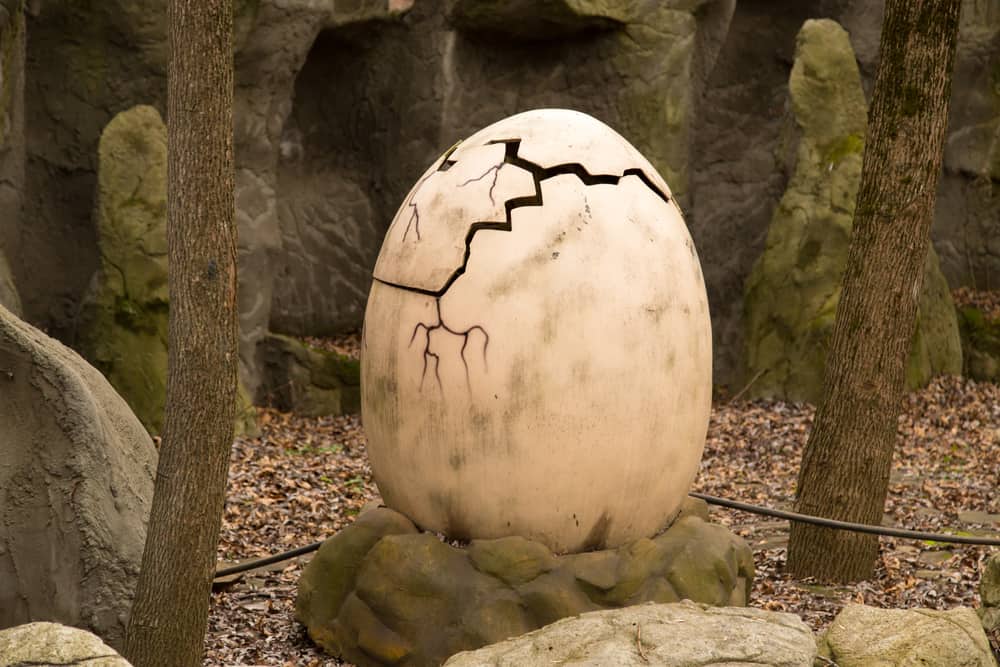
12. This Dinosaur Represents The Beginning Of Evolution For Dinos
Scientists have been researching dinosaurs for years and unlock new information every year about these creatures. Have you ever wondered how they evolved over the years? Scientists and Paleontologists believe they could have evolved from a 4-inch tall reptile! An article published in 2020 in the Proceedings of the National Academy of Sciences journal discusses this small reptile and what they believe caused the evolution. The animal in question is called Kongonaphon kely, and it lived 237 million years ago. Scientists found this tiny reptile in 2020. Upon examination, they thought the specimen was an adult. So why do scientists believe this creature is the beginning of the evolution of dinosaurs?
Scientists think it’s part of the evolutionary chain since the Kongonaphon kely lived before the massive dinosaurs we all know of today. Discovered in Madagascar, they think Kongonaphon kely ate bugs, hence the nickname ‘tiny bug slayer.’ Kongonaphon kely lived during the Triassic period, before an event of great extinction that decimated life worldwide. It would have been a difficult time to survive with explosions from volcanoes and extreme variances in temperature. Other animals that lived during this time include the velociraptor, Tawa, and Anchisaurus. The Kongonaphon Kely may help scientists discover more about how flying dinosaurs came to be.
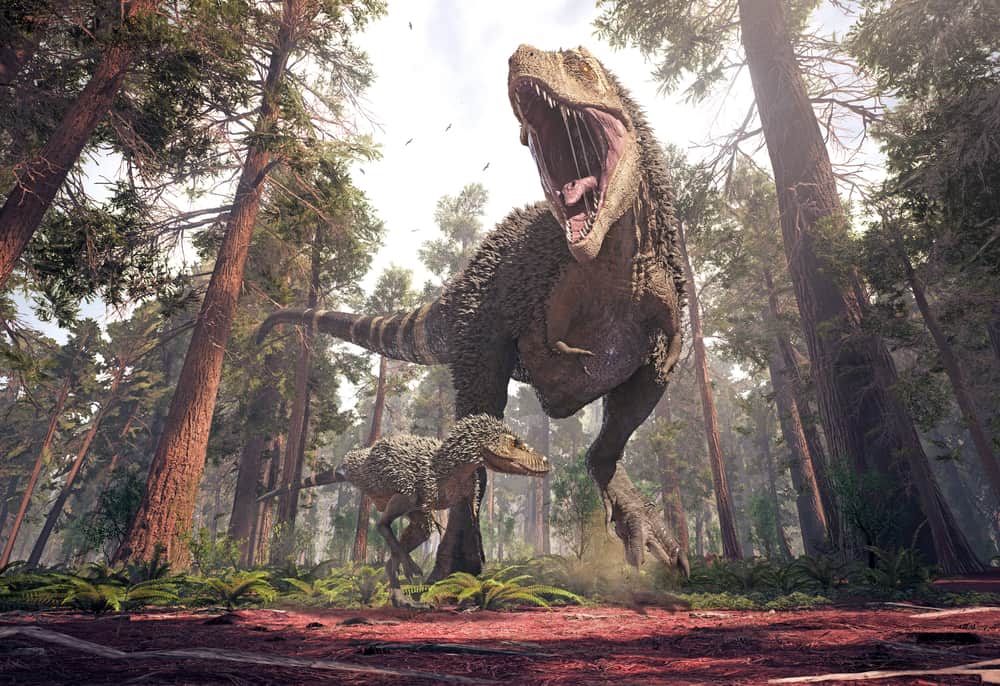
11. An Extraordinary Amount of Tyrannosaurus Rexes Roamed The Earth
We’ve all seen the movies with dinosaurs and how much destruction a T-rex can cause. Could you imagine a total of 2.5 billion roaming the Earth? It’s crazy to think about, but that’s how many were roaming during the Cretaceous period. That’s many dinosaurs, and it’s a wonder that any other types of dinosaurs survived during that time! A study by UC Berkeley released in 2021 posited that because these dinosaurs lived and died for more than 2.5 million years, that at least 20,000 existed at any given time. That gives a total of 2.5 billion T. Rexes during those 2.5 million years.
It really is a wonder that any other type of dinosaur survived with the T. Rexes capability for violence and destruction. UC Berkeley has made strides in the paleontology department using Dalmuth’s Law. If you’re wondering how they made these calculations to determine how many T. Rexes roamed the Earth, scientists used Dalmuth’s Law. This particular law allows scientists to use the population density and body mass of a dinosaur to determine how many lived during a specific amount of time. Since science can never be exact, 2.5 billion is an estimation. However, experts believe the numbers could range from 140 million to 42 billion during the cretaceous period.
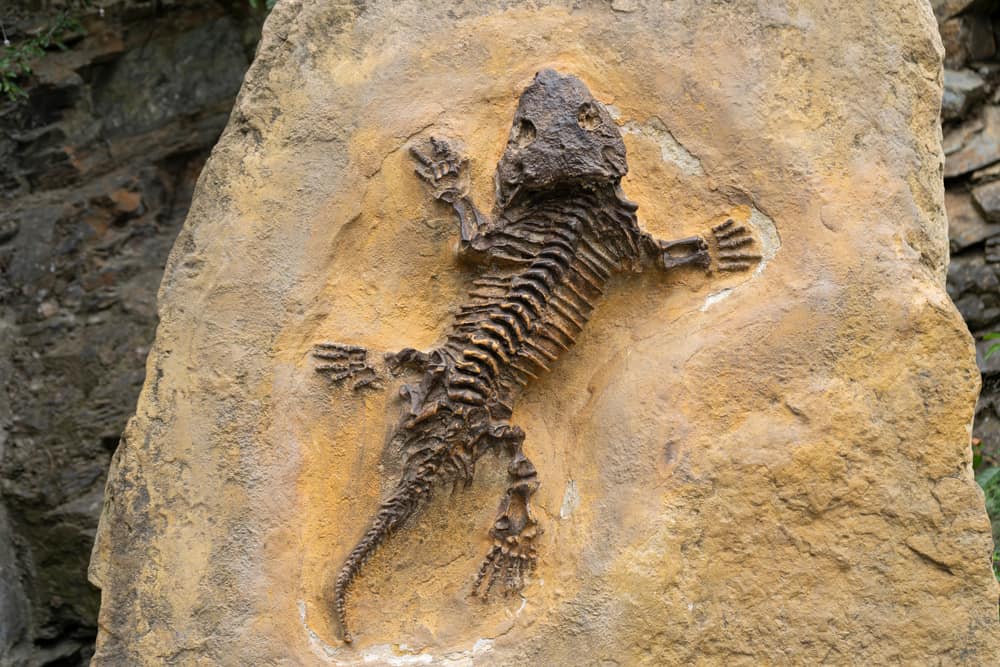
10. A Burial Site With A Shocking Discovery Made Headlines
It’s difficult to learn everything we need to know about dinosaurs without living specimens, so scientists do what they can with fossils found during excavations. These fossils give them information we would have never known. Could you imagine what we would learn from dinosaurs if they were living today? A shocking find at the Colorado – Utah border led scientists to believe some dinosaurs may have been cannibals. A paleontologist by the name of Stephanie Drumheller-Horton and her team discovered 2,000 bones with a peculiar look to them. Over 28% of the bones found had scratches, punctures, and bites, leading Stephanie and her team to believe the unthinkable.
That’s right. Other carnivorous dinosaurs cannibalized the bones. The discovery led scientists to believe in the possibility of cannibalism with certain species of dinosaurs. Scientists and paleontologists believe the reason behind cannibalism could have had something to do with the weather changes at the time. If there weren’t enough food sources available, some dinosaurs could have cannibalized their dead to survive the dry season. While it’s possible meat-eaters scavenged these fossils, the likelihood of cannibalization remains a possibility. You’ll be surprised by all of the new information available! Keep reading to learn more dinosaur facts you never learned in school.
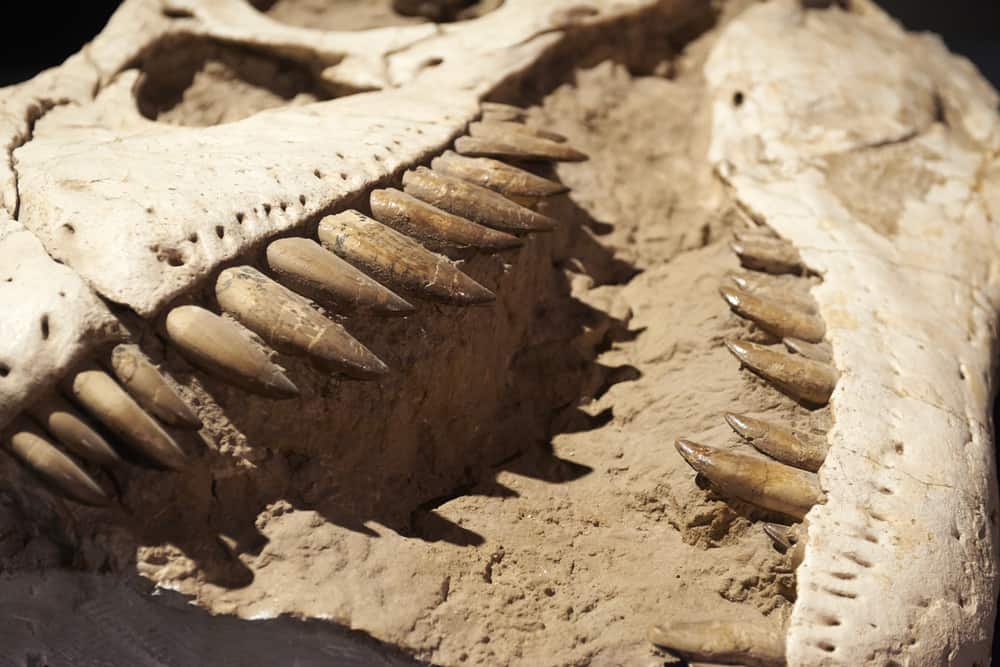
9. A New Discovery For The T. Rex Species Could Lead to New Information
Paleontologists in Canada made a discovery in 2010 that led to a new type of Tyrannosaur called ‘The Reaper of Death.’ This new species was the first discovered in fifty years in Canada. It predates the T. Rex by at least twelve million years. Its technical name is Thanatotheristes degrootorum, which translates from Greek to mean Reaper of Death. A Ph.D. student by the name of Jared Voris find this fossil. He first saw fossils in the Royal Tyrrell Museum that didn’t look like a typical T. Rex skull. The skull had vertical ridges along the jawline that didn’t match any known species.
In 2010, when exploring the area surrounding the Bow River, Jared Voris found skull fragments. His advisor, Darla Zelenitsky, believes this Tyrannosaur is a new species different from the T. Rexes we all know from television and history books. This find is fantastic for Canada as a new species hasn’t been discovered in fifty years. It’s believed that The Reaper of Death roamed the Earth 79 million years ago during the Late Cretaceous period. Paleontologists believe this behemoth was at least 8 feet tall, weighing at least two tons. It also had 2.7- inch-long teeth used for tearing into the flesh of other dinosaurs, birds, and fish.

8. Are Dinosaurs Cold-Blooded Like Reptiles?
We still don’t know so much about dinosaurs, so is it possible they could have been warm-blooded? Scientists have speculated for years whether feathers play a role in the type of blood dinosaurs had. In fact, we now understand that most, if not all, dinosaurs had some kind of feathers. Paleontologists believe these dinos didn’t use their feathers to fly but for insulation against cooler temperatures. A 2020 study confirmed that three types of dinosaurs – the Ornithischia, Sauropodomorpha, and Theropoda – were warm-blooded. So, is it possible all dinosaurs were warm-blooded like these three? Scientists believe there are many reasons why they could have been. Keep reading to find out what those reasons are!
Some paleontologists believe dinosaurs had speedy metabolisms that would need warm blood to survive. Other aspects of their reasoning include some dinosaurs’ large sizes. Their size leads researchers to believe they could have been warm-blooded. While the topic is still up for debate, one thing is for sure – much research is needed to prove this theory and help us better understand every species of dinosaurs. If you found this interesting, keep reading to learn more facts scientists have discovered since you graduated from school.
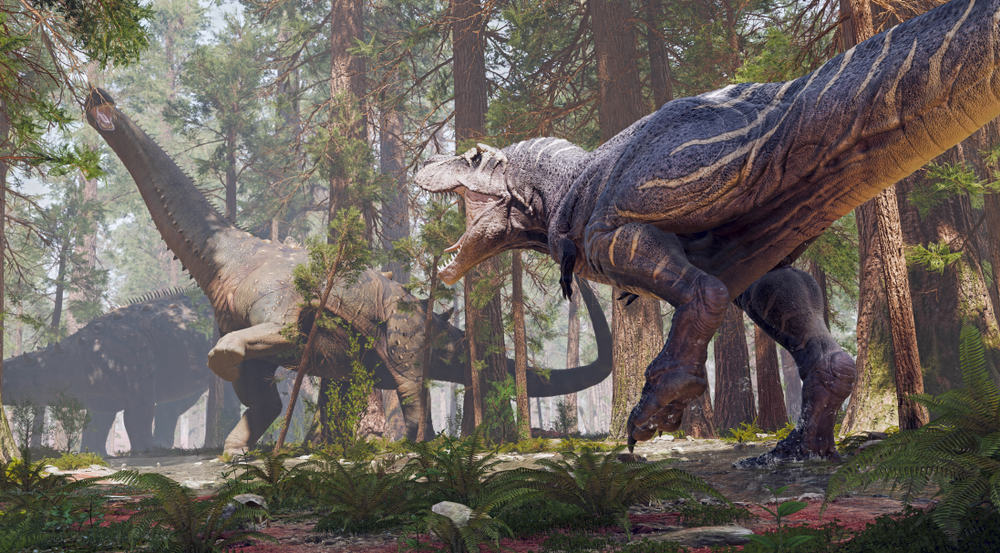
7. Did You Know The Tyrannosaurus Rex Has Relatives?
That’s right! A species of dinosaur was discovered around 20 years ago that resembles the T. Rex. There’s one catch, however. The new species found by paleontologists is much smaller than the T. Rex we all recognize today. Its name is Suskityrannus hazelae, and it lived over 92 million years ago. This tiny dinosaur was three feet tall and had similar features to a T.Rex. Discovered in New Mexico by paleontologists, Suskityrannus hazelae may help to build the Tyrannosaurus family tree. This new information will help scientists and researchers gain a better understanding of prehistoric creatures. While the fossils found weren’t enough to gain a clear understanding, paleontologists are hopeful that more discoveries are to come.
Sterling Nesbitt, one of the paleontologists to help discover the new dinosaur, works for Virginia Tech in the Paleontology department. He believes the fossils found in New Mexico will help scientists build the family tree and determine where Suskityrannus hazelae fits into the equation. Since the dinosaur was so small, it’s challenging to find one fully intact, leading to more difficulty understanding the creature. It’s believed Suskityrannus hazelae was carnivorous as one of the fossils was found with a partially digested lizard skull inside it. Tyrannosaurs from other parts of the world have helped to discover where Suskityrannus hazelae lands on the Tyrannosaur family tree.
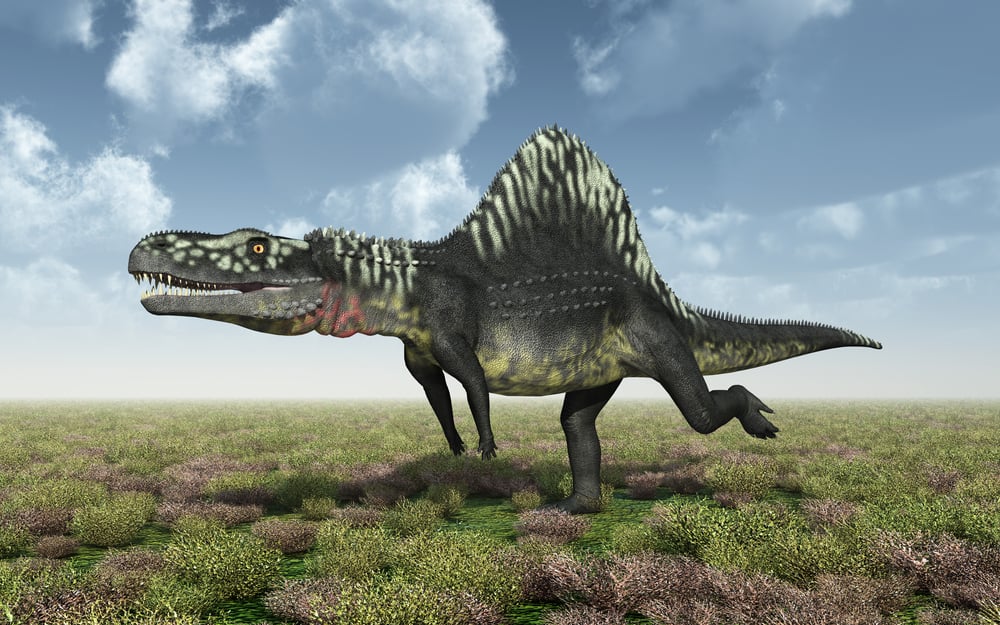
6. What Do You Know About The Archosaur?
It’s interesting to think of the many different places dinosaurs lived during their time on Earth. Paleontologists have found fossils, right? That includes on the frigid continent of Antarctica. The Archosaur reigned over Antarctica more than 250 million years ago. Paleontologists discovered a fossil dating back 250 million years on the icy continent that helped them gain insight into the Archosaur. This dinosaur was similar to an iguana and was at least four to five feet long. Its technical name – Antarctanax shackletoni – means Antarctica King. The Antarctanax shackletoni lived during the Triassic period, some 251 million years ago.
The Antarctanax shackletoni lived when Antarctica was thriving with abundant plant life, unlike the freezing, barren land we know today. Researchers learned quite a bit from the fossils found in Antarctica. They found that the lizard lived on the ground because the bones in its feet did not show signs of burrowing or climbing. Scientists believe Antarctica had vast forests, warm temperatures, and abundant animals when Antarctanax shackletoni was alive. It’s incredible to think of such a barren place filled with forests, rivers, and even wildlife. It’s not something you would expect, that’s for sure!
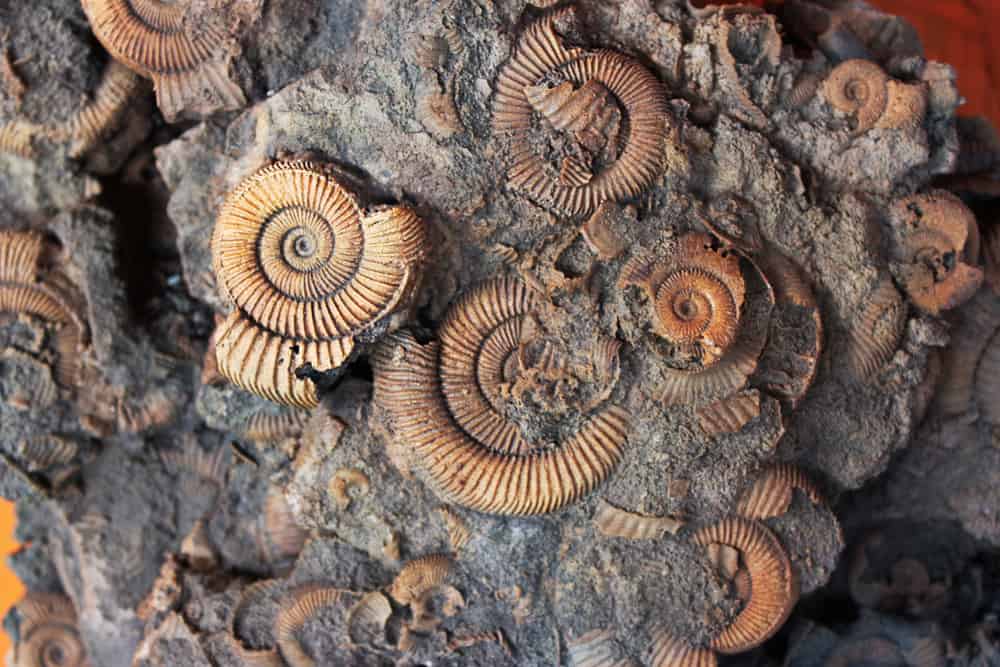
5. Changes Are Coming Soon
With advancements in science and paleontologists finding new fossils every year, our understanding of the dinosaur race may change drastically. We learn something new every day about these majestic creatures, and discoveries will change how we think about them. It’s difficult to imagine what kind of changes are coming in the future, but we’re sure it will be thrilling. Whether it’s finding a new species or learning more about species we already know, reading this information will change how we think about dinosaurs. Keep reading to find out how advancements in science will help us change our views.
Paleontologist Johnathon Tennant believes there is a gap in the fossil record that needs to be filled in. This gap will help us to learn more about every type of dinosaur. Paleontologists believe the golden age of discovery will lead to exquisite findings on the dinosaur fossil front. They find more and more fossils every year that help fill in the fossil record gaps. Once the fossil record is complete, we’ll have a better understanding of dinosaurs. That includes insight on how dinos lived and died. There are thousands of fossils in the world waiting to be discovered, and once they are found, we may even see more new species!

4. These Behemoths Hunted In A Strange Way
The Tyrannosaurus Rex is one of the most well-known dinosaurs. You can find this giant on the big screen, in the toy aisle, and for various decorations and party themes. It’s a dinosaur we all know well, or so we thought. Did you know these monsters actually hunted in packs? Initially, these massive dinosaurs were lone hunters, but new evidence has emerged that may change the way we think. Fossils found in Utah at the Grand Staircase-Escalante National Monument tell us a different story. These fossils show that dinosaurs hunted in packs rather than alone. The fossils also indicate something about the way they cared for their young!
Scientists now believe that the Tyrannosaurus Rex was actually a social creature. In fact, this large dino probably even enjoyed the company of others, especially while hunting. We’re sure you can imagine how much easier it would be to take down prey when there’s a group of these behemoths instead of a lone hunter. Scientists came up with this shocking discovery by studying the fossils of four T. Rexes that were found near each other. Chemical analysis of the soil and fossils show they died around the same time, leading scientists and paleontologists to believe they were hunting together. Keep reading for more interesting dinosaur facts!
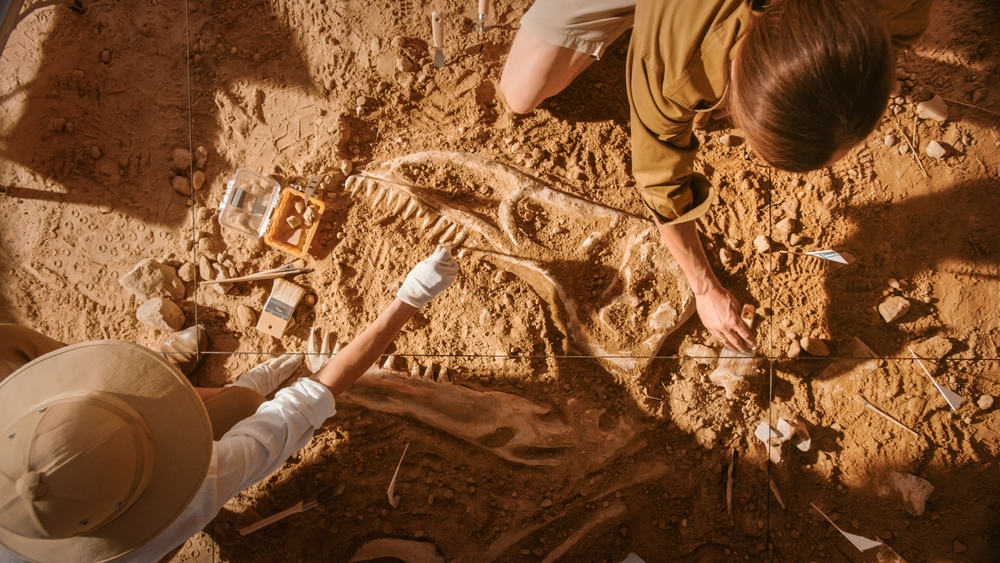
3. Let’s Talk About Growth Spurts
Like humans during their teenage years, dinosaurs went through growth spurts that helped them grow into the enormous dinosaurs we know today. The Tyrannosaurus Rex is no exception. A study published in Science Advances talks about T. Rexes going through growth spurts and growing into their full size during their teenage years. Scientists previously thought that the smaller T. Rexes were different dinosaurs entirely. Advancements in science have changed the way we look at these dinosaurs. Studies on two skeletons prove the growth spurt theory due to the size of the bones and their body structures. Keep reading to learn more about these growth spurts.
A paleontologist by the name of Steve Brusatte believes most scientists are unfamiliar with the growth spurt theory as it’s a relatively new idea. It’s amazing to think these dinosaurs went from tiny hatchlings to 19,000-pound behemoths. A growth spurt had to happen somewhere during their lives to make that happen, right? It was discovered that their teenage years were a likely age for the growth spurts to occur due to evidence from the bones studied. Originally thought to be Pygmy dinosaurs, these teenage T. Rexes have taught scientists and paleontologists much about their younger years. Keep reading for more interesting facts you never knew!
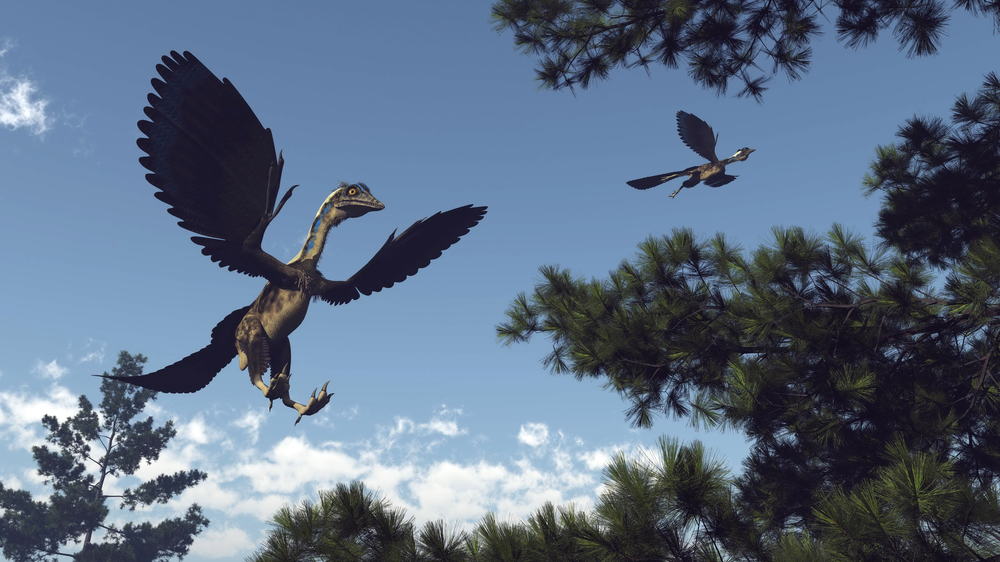
2. Scientists Discovered New Information About Connections Between Birds And Dinosaurs
A paleontologist named Takuya Imai made an important discovery in 2013 that changed the way we look at the evolution between dinosaurs and modern-day birds. They discovered an Early Cretaceous period bird in Japan, which was the first one to be similar to modern-day birds. They found the bird first outside of China and named it Fukuipteryx prima. This bird had an intact skeleton that was perfect for study. Nature magazine reported it in 2019. Since then, it has become an essential topic of discussion between paleontologists. It helps scientists to understand better how birds evolved.
They believed the bird skeleton was one year old when it passed away, leading scientists to understand better the bird and its connection to the period in which it lived. Finding this intact skeleton provides much-needed information about these primitive birds and their connection to modern-day birds. As an example, Fukuipteryx prima is similar to modern-day birds in that their tailbones are the same. It’s interesting to see the connections between birds that lived millions of years ago to the birds we see today. You never know when someone will find a new skeleton, giving scientists more information and a better understanding of how our world works.

1. A Scene From Jurassic Park Couldn’t Have Happened
We’re sure you all remember the scene from Jurassic Park where a Tyrannosaurus Rex outruns a Jeep. Well, we hate to be the bearers of bad news, but this couldn’t have happened. Scientists believed that the T. Rex couldn’t have run that fast due to the size of its legs. Paleontologists initially thought the T. Rex could have run upwards of 33 miles per hour, but that estimation has since been revoked. A study done in 2017 with computer models shows these vast dinosaurs couldn’t have run any faster than 12 miles per hour. That’s a bid difference from chasing down a Jeep in the movies!
It’s incredible to think of the advancements in science that bring us this new information. When we were in school, we learned all about dinosaurs. However, with new research over the years, the authors need to update their textbooks. That way, everyone can learn about the much-needed information and new findings that change the way we think of these prehistoric creatures. The T. Rex is one of the most well-known dinosaurs due to its size and appearance. Gathering new information will help scientists give us a clearer picture of how these dinosaurs lived. Hopefully, one day, we’ll have a better understanding of the way they lived, hunted, parented, and more.

